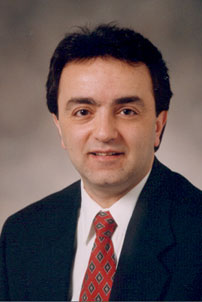The Eighth IASTED International Conference on
Advances in Computer Science
ACS 2013
April 10 – 12, 2013
Phuket, Thailand
TUTORIAL SESSION
Cloud Computing Technology with VoIP and Media Applications
Duration
3 hours
Objectives
In this tutorial, we present cloud computing technology the fundamentals with latest applications in Video and multimedia. Scalability and availability in clouds are discussed focusing of servers that distribute the workload amongst themselves. Cost, reliability and efficiency in cloud technology are also described.We then explain the transportation of real-time signals along with the signaling protocols used in voice over IP (VoIP) telephony and multimedia networking. The tutorial covers the signaling protocols as H.323 series of protocols, and Session Initiation Protocol (SIP) which are responsible for session signaling. The H.323 protocols interact to provide ideal telephone communication, providing phone numbers to IP address mapping, handling digitized audio streaming in IP telephony, and providing signaling functions for call setup and call management. The H.323 series support simultaneous voice and data transmission and can transmit binary messages that are encoded using basic encoding rules. We also review the Session Initiation Protocol (SIP) as one of the most important VoIP signaling protocols operating in the application layer of TCP/IP model. SIP can perform both unicast and multicast sessions and supports user mobility and handles signals and identifies user location, call setup, call termination, and busy signals. SIP can use multicast to support conference calls and uses the Session Description Protocol (SDP) to negotiate parameters.
The tutorial further covers Compression of multimedia components such as Digital Voice and Video, focusing on data-compression techniques for voice and video to prepare digital voice and video for multimedia networking will be [resented. The topic starts with the analysis of information-source fundamentals, source coding, and limits of data compression and explains all the steps of the conversion from raw voice to compressed binary form, such as sampling, quantization, and encoding. The discussion also summarizes the limits of compression and explains typical processes of still-image and video-compression techniques, such as JPEG, MPEG, and MP3.
The tutorial will then present load balancing in clouds. real-time transport protocols, such as Real-Time Transport protocol (RTP). The next topic is streaming video in a single server, using content distribution networks (CDNs). Also discussed is the Stream Control Transmission Protocol (SCTP), which provides a general-purpose transport protocol for transporting stream traffic. The tutorial describes detailed streaming source modeling and analysis. In real-time applications, a stream of data is sent at a constant rate. This data must be delivered to the appropriate application on the destination system, using real-time protocols. The most widely applied protocol for real-time transmission is the Real-Time Transport Protocol (RTP). We also cover video streaming that presents a significant challenge to network designers. A video in a single server can be streamed from a video server to a client at the client request. The high bit-rate video streaming must sometimes pass through many Internet service providers, leading to the likelihood of significant delay and loss on video. One practical solution to this challenge is to use content distribution networks (CDNs) for distributing stored multimedia content. Video streaming, e-mail, and image packets in the best-effort Internet are mixed in the output queue of the main exit router of a domain.
The Tutorial will then focus on the Stream Control Transmission Protocol (SCTP) providing a general-purpose transport protocol for message-oriented applications. SCTP is a reliable transport protocol for transporting stream traffic, can operate on top of unreliable connectionless networks, and offers acknowledged and non-duplicated transmission data on connectionless networks. SCTP has the following features. The protocol is error free. A retransmission scheme is applied to compensate for loss or corruption of the datagram, using checksums and sequence numbers. It has ordered and unordered delivery modes. SCTP has effective methods to avoid flooding congestion and masquerade attacks. This protocol is multipoint and allows several streams within a connection. In TCP, a stream is a sequence of bytes; in SCTP, a sequence of variable-sized messages. SCTP services are placed at the same layer as TCP or UDP services. Streaming data is first encapsulated into packets, and each packet carries several correlated chunks of streaming details. The Tutorial will ultimately present multimedia over general Wireless and WiMAX networks.
Qualifications of the Instructor(s)

Nader F. Mir received a B.Sc. degree with honors in electrical and computer engineering in 1985 and MSc and PhD degrees, both in electrical engineering, from Washington University in St. Louis, in 1990 and 1994, respectively.
He is currently a Professor and Department Associate Chairman of Electrical Engineering at San Jose State University, California. He is also the Director of the MSE Program in Optical Sensors Networks for Lockheed Martin Space Systems.
His research interests are analysis of computer communication networks, design and analysis of switching systems, network design for wireless ad hoc, internet and sensor systems, information systems and applications of digital integrated circuits in computer communications.







